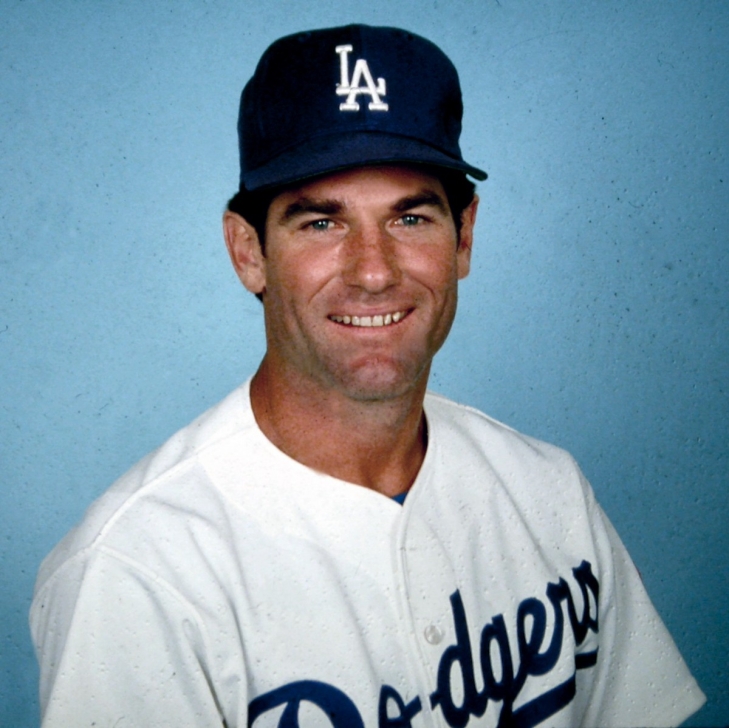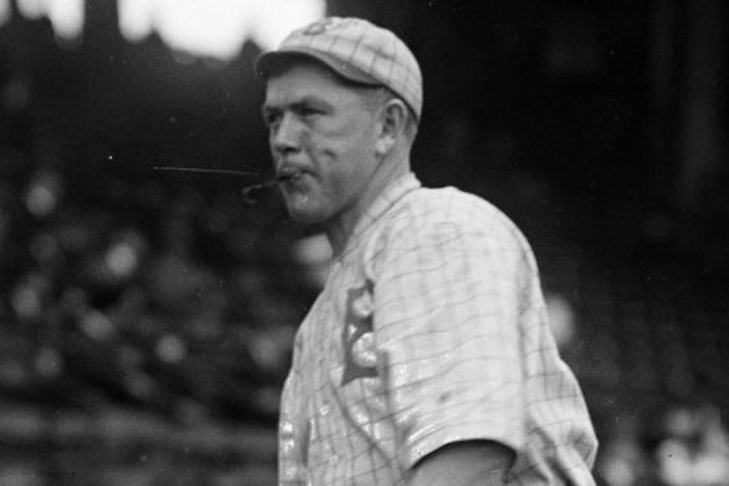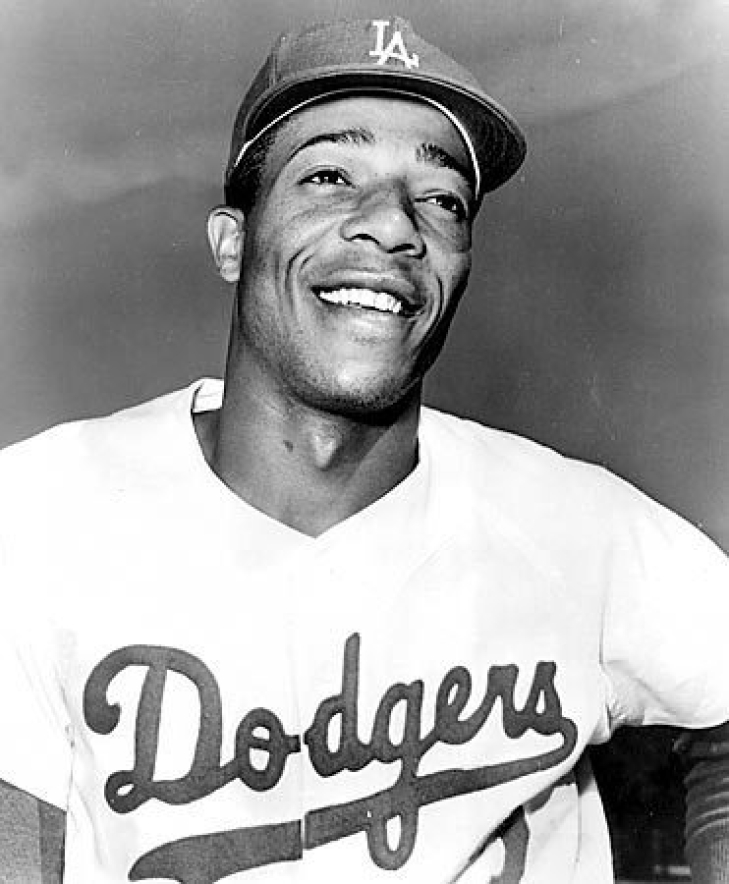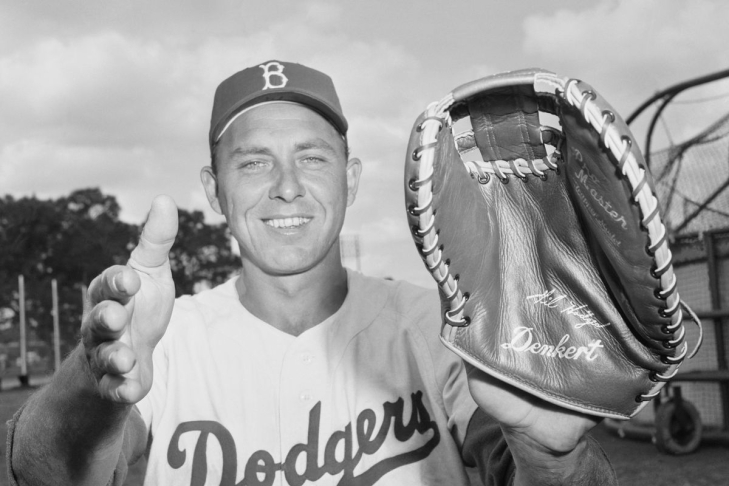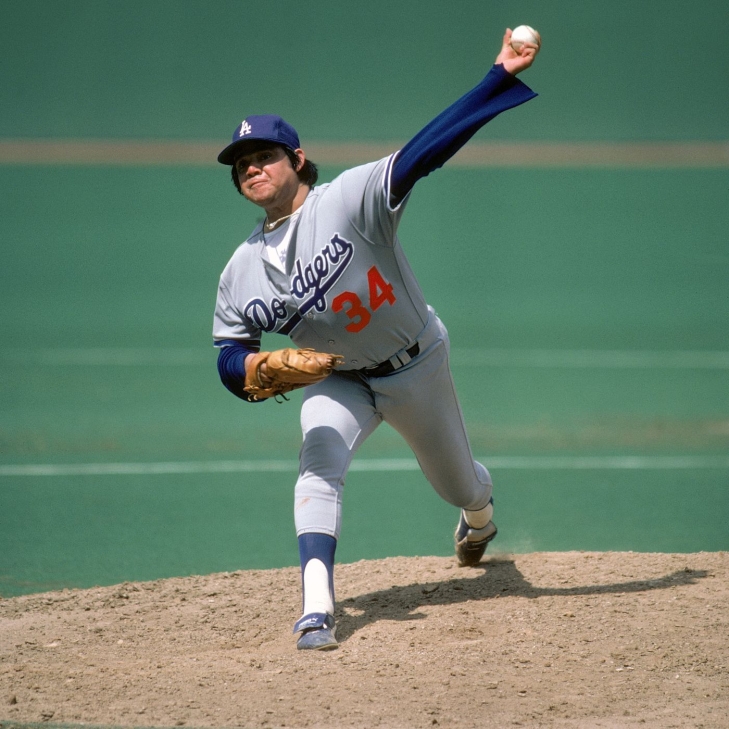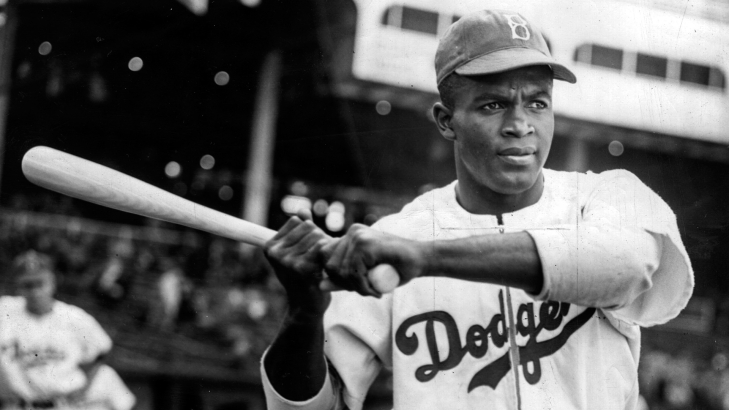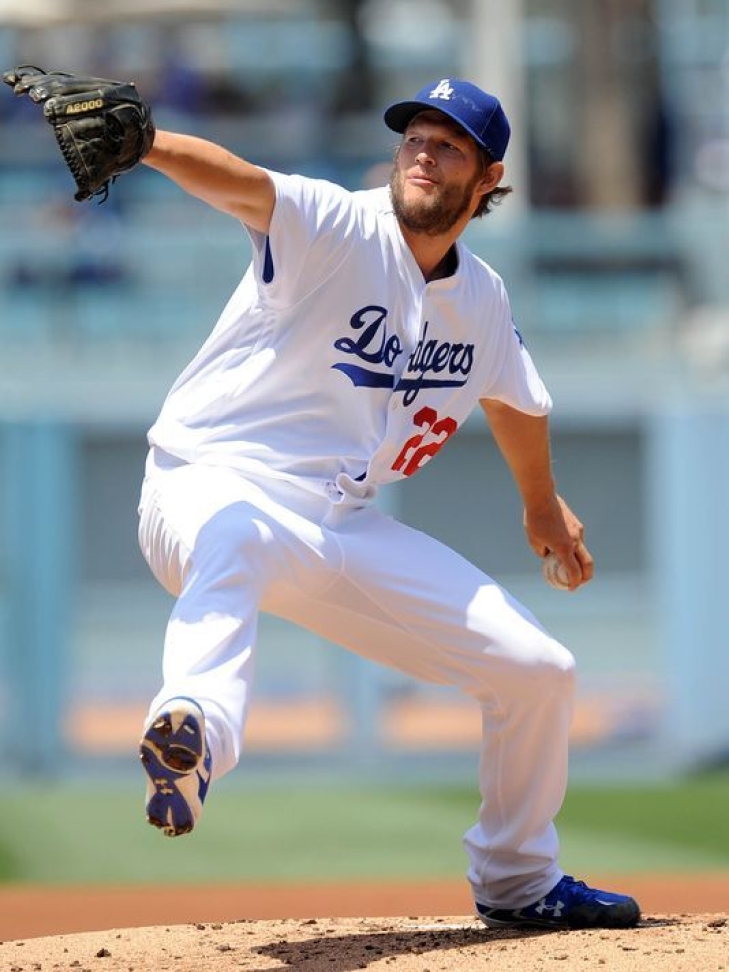Warning: Attempt to read property "params" on null in /home/notinhal/public_html/plugins/k2/k2canonical/k2canonical.php on line 382
12. Steve Garvey
One of the most popular and recognizable players of the 1970s, Steve Garvey, first played in the Majors in 1969, but it was not until 1973 that he became Los Angeles's regular First Baseman. After that year, he was the anchor of one of the top infielders in Baseball and, for many, the face of the franchise.
Garvey had his breakout and best season in 1974. Garvey won his only MVP that year and began a streak of eight All-Star Games and four Gold Gloves. Establishing himself as one of the top contact hitters, Garvey batted at least .300 seven times and was a two-time NL leader in Hits (1978 & 1980).
Garvey did not get enough credit for his power. He had five 20-plus Home Runs years, with one season exceeding 30. Belting 211 Home Runs with Los Angeles, Garvey would also drive in 992 batters. The Dodgers appeared in the 1977 and 1978 World Series, losing efforts to the Yankees, but Garvey was a crucial part of their success, with Garvey winning the 1978 NLCS MVP with a second-place finish in MVP voting.
Garvey would return to the World Series in 1981, this time with the Dodgers winning it all and giving him his first and only Title. The end for Garvey in Los Angeles
With the Dodgers, Garvey batted .301 with 1,968 Hits. In 2019, Garvey was among four former players honored with plaques as Legends of Dodgers Baseball.
22. Burleigh Grimes
Burleigh Grimes had a lot of great moments outside of Brooklyn, but the meat of his career took place with the team then named the Robins.
From Wisconsin, Grimes began his Major League career with Pittsburgh, where he noticeably lost 13 consecutive Games, so the Pirates fan base did not shed any tears when he was traded to Brooklyn after the 1917 Season. Grimes made an immediate impact with the Robins, going 19-9 with a 2.13 ERA in his debut season, and once the spitball was outlawed in 1920, he was grandfathered in and allowed to use it throughout the rest of his career.
An aggressive player on the mound, Grimes led the NL in Wins in 1921 (22) and was an innings-eater with four 300-plus Inning years. Grimes had a sub-standard year in 1925 (12-19, 5.04 ERA) and was marginally better in 1926. The Robins traded Grimes to the New York Giants, where he got back on track, but his Brooklyn record of 158-121 and a 3.46 ERA is good enough to place him on the top half of a baseball list, even as storied as the Dodgers. His rank is also propelled by his solid hitting, as he batted .251 with 227 Hits for the team.
Grimes was chosen by the Veterans Committee in 1964 to enter the Baseball Hall of Fame.
16. Nap Rucker
Nap Rucker played an even ten seasons with Brooklyn (1907-16), back when the franchise had intriguing team names like the Superbas and the Robins.
Rucker only had a career record of .500 (134-134), but it was not until 1915 that he played on a winning team. In his first seven seasons, Rucker's ERA was below 3.00, and he was always in the top ten in bWAR for Pitchers in those seasons. Rucker was at the top of that leaderboard in 1911 and 1912.
Considered to be one of the fastest pitchers of his day, Rucker was again in the top ten in Strikeouts in those first seven seasons, and while he was prone to fits of wildness, he still managed to place in the top ten in WHIP four times.
Rucker's last three seasons were mostly ineffective from arm fatigue, and he was out of the Majors by age 31. As good as Rucker was, it could be argued that it was wasted for bad Brooklyn teams, but he gave fans a great reason to come out to the park.
11. Willie Davis
Willie Davis played most of his career with the Los Angeles Dodgers, where he did an excellent job at the top of the order and defensively in Centerfield.
Davis first made the Dodgers roster in 1960, eventually replacing the legendary Duke Snider in Centerfield. He was one of the fastest baseball players, a skill he used to chase down balls in the outfield and befuddle opponents on the base paths. Early in his career, Davis helped the Dodgers win two World Series Championships (1963 & 1965), and in the early 70s, he won three Gold Gloves. He was also a two-time leader in Triples and went to two All-Star Games for L.A...
Davis had 11 20-plus Stolen Base years for Los Angeles, with a total of 335 for the team, while also blasting 154 Home Runs. The Dodgers traded Davis for Mike Marshall after the 1973 Season, and as the Dodgers charged into the rest of the decade, the contributions of Davis to Los Angeles were sadly forgotten.
In a strange turn of events, when Davis was Hall of Fame eligible in 1985, he was not even included on the ballot, making him the biggest ballot omission in all of baseball.
10. Gil Hodges
Gil Hodges was one of the most popular players in Dodgers history, an incredible feat considering the talent and characters that graced the team.
After appearing in one Game in 1943, Hodges entered the American Military, losing two years to due service. He returned in 1947, the same year as Jackie Robinson, and they were part of a young team on the rise. Originally a Catcher, Hodges was moved to First Base and was one of the team's power hitters throughout the 1950s.
Hodges began a seven-year streak of All-Star Games in 1949, and from 1949 to 1959, he was a perennial 20 Home Run player, with a pair of two 40 Home Run years (1951 & 1954). He drove in at least 100 Runs in that seven-year streak of All-Stars, and while he never finished higher than seventh in MVP voting, he had nine years where he received voted for the highest individual award in the National League.
The Brooklyn fans loved Hodges, and he loved them back. The Dodgers had been good for a while but had been unable to win the World Series, but it changed in 1955. While Hodges was beginning to decline and had a poor first three Games in the World Series, his bat came alive, and he fittingly had the series-winning RBI and ended the game defensively with an out. This was the only World Series win for the Dodgers in Brooklyn, and many fans were happiest for Hodges.
Hodges still hit Home Runs for the club and was a veteran presence helping the Dodgers reach the 1956 and 1959 World Series, winning the latter, with that coming in Los Angeles. Hodges returned to New York when they took him in the 1962 Expansion Draft, and he left the Dodgers with 361 Home Runs, 1,254 RBI, 1,884 Hits, and an OPS of .847.
After receiving the most votes of any former player not to be elected, Hodges was chosen by the Baseball Hall of Fame in 2022 by the Veteran’s Committee. The Dodgers responded by retiring his number 14.
It was a long time coming, especially considering he had over 50 percent of the ballot for 11 of his 15 years.
9. Don Sutton
Don Sutton might not have looked like an imposing figure on the mound, with his curly hair and friendly face, but he got a lot of players out, often vis three strikes.
Sutton debuted in 1966 for the Dodgers two years after he was signed, and he joined Los Angeles's Starting Rotation and proved immediately that he belonged. Playing 15 years with the Dodgers, Sutton never had less than 11 Wins in a season, at least 15 eight years in a row (1969-76), and a ninth one in 1978.
Sutton's best period was in the mid-70s, where from 1972 to 1976, he regularly finished in the top five in Cy Young voting and twice led the league in WHIP with one league lead in SO/BB. After his peak ended, Sutton was still among the better starters in the NL, and much of the success of Los Angeles in the late 70s stemmed from his work on the mound. A four-time All-Star, Sutton finally won the ERA Title in 1980, which would also be his last year with the Dodgers, as he signed with the Astros as a Free Agent.
Sutton entered the Baseball Hall of Fame in 1998 in his fifth year of eligibility. As per Dodgers tradition, they retired his number (20) that year. As of this writing, Sutton is still the franchise leader in Wins (233), Innings Pitched (3,816.1), Strikeouts (2,696), and Shutouts (52).
8. Zack Wheat
Zack Wheat was one of the top players for Brooklyn in the dead ball era, playing all but his last season in the Majors for Brooklyn.
Playing in the Outfield, Wheat first appeared for Brooklyn in 1909, becoming their starting Leftfielder the year after. Collecting 2,804 of his 2,884 Hits with the Dodgers, Wheat batted .317 for the team and was also a solid defensive player. Wheat regularly batted over .300, winning the 1918 Batting Title, and was the Slugging Champion in 1916.
Had Wheat played decades later in the Dodgers heyday, he would be more remembered in the baseball zeitgeist.
Wheat entered the Baseball Hall of Fame in 1959 through the Veteran’s Committee.
15. Fernando Valenzuela
In 1981, a "mania" took over Los Angeles. Some would say it took over the entire baseball world. That was "Fernandomania" in honor of Mexican hurler Fernando Valenzuela.
The Dodgers accidentally discovered Valenzuela as they were scouting a Shortstop in Mexico. They were dazzled by the rotund hurler and signed him, buying out his Mexican League contract in 1979. A year later, he was a September callup, and in 17.2 Innings, he never allowed a run. It didn't take a clairvoyant to see what might happen in 1981.
"El Toro" helped the Dodgers win the 1981 World Series. That season, he won the Rookie of the Year and Cy Young, making him the first player to accomplish that in the same year. Valenzuela was the opening day starter, and everyone in Los Angeles took the Mexican star.
The mania surrounding Valenzuela cooled, but he was still an elite pitcher for many years. He was an All-Star each year from 1981 to 1986, and he had three more top-five finishes in Cy Young voting. Valenzuela would have three 200 Strikeout years, and he was also a decent batter, winning two Silver Sluggers.
The All-Star years were over by 1987, and he played until 1997, with stops in California, the Mexican League, Baltimore, Philadelphia, San Diego, and St. Louis. He retired with 173 Wins and 2,074 Strikeouts.
Pitchers had better careers, but many of those never captured the imagination of baseball fans like Fernando Valenzuela.
In 2019, he was one of four players to have a plaque in recognition as a Legend of Dodger Baseball, but that might be rescinded, as that was reserved for great players who were not in the Baseball Hall of Fame. In 2023, the Dodgers reversed course, and announced that his #34 would be retired by the team.
7. Pee Wee Reese
How do you not love somebody named Pee Wee Reese?
The Dodgers fans did, we do, and as of this writing, it is Reese who is the all-time franchise leader in bWAR for Position Players.
We bet that was a surprise!
Reese was coming up through the Red Sox system and should have been the heir apparent at Short for Boston. The problem was that Boston had Joe Cronin at that position, who was also the Manager, and he suggested that Reese be traded, which happened in the summer of 1939. Reese was called up to his new parent club, Brooklyn, the following year, and he broke through in 1942, making his first All-Star team while finishing first in Defensive bWAR.
Reese was one of the many American players to leave the game due to military service stemming from World War II. He came back better than ever in 1946, ascending back to the top of defensive infielders, but now he was a much better hitter. Reese was also a key figure in accepting Jackie Robinson, as Reese refused to sign a petition from other teammates to keep him from being called up. Not only would Reese and Robinson become friends, but his public displays of acceptance also showed the world that the Negro League players would be welcomed.
From 1946 to 1954, Reese was an All-Star, batting at least .260 and drawing a sizable amount of Walks. He was not a potent power hitter, but he could go deep, hitting 126 over his career, combined with excellent speed (232 Stolen Bases). The overall package gave Reese eight top-ten MVP finishes, peaking at fifth in 1949. Reese would help the Dodgers win the 1955 World Series, but age would reduce his effectiveness afterward, and he retired after the 1958 Season.
He retired with 2,170 Hits and batted .269. He would not enter the Baseball Hall of Fame until 1984 when it took the Veteran's Committee to select him. Los Angeles then retired his number 1.
2. Jackie Robinson
If this list were based purely on iconic stature, Jackie Robinson would be number one, and it wouldn't be close. The same would be true if we looked at importance. Saying that this is the Los Angeles Dodgers, one of the most successful teams in all of sports, and there are many Hall of Fame Dodgers who logged more playing time and compiled more stats than Robinson did while wearing the Dodger blue. This has to matter.
There is nothing we can write about Robinson that you have not heard before. Dodgers General Manager, Branch Rickey, wanted to break the color barrier and needed the right player to do it. He was a player who was not only great but could withstand the barrage of hatred coming his way. That man was Robinson.
After a year in the Minors to get him mentally ready, Robinson debuted for Brooklyn in 1947 at the age of 28. Robinson proved what Rickey already knew in that he was a five-tool player who could handle the mental stress of being the first black man in the Majors. Robinson won the Rookie of the Year and was entering his peak.
In 1949, Robinson again made history by becoming the first black player to win the MVP while also capturing the Batting Title. It was his only MVP, but he received MVP votes the next four years, and he never finished a year batting under .300 until 1955. Robinson had the power (137 HR) and the speed (197 SB), batted over .300 for his career, and was also one of the best defensive players of his day.
Robinson's age and injuries caught up with him in 1955, but his leadership skills were invaluable to a team that won the World Series that year. He retired after the 1956 season, which would essentially void a trade to the Giants, and his career ended as one of the most-known athletes of all time, a status still enjoyed today.
The Baseball Hall of Fame inducted Robinson in his first year of eligibility in 1962. Major League Baseball would later league-wide retire his number 42, the number that he will own forever.
6. Dazzy Vance
The ranking of Dazzy Vance might seem a little high, but much of that stems from Vance being successful for the Dodgers when they were not one of the better teams in the National League. That should not matter, as, at one time, he was the elite Pitcher in the NL and the top flamethrower for years.
Vance bounced between the Minors and Majors for a few years before securing a spot in the Brooklyn rotation in 1922, his first entire season at the elite level. Vance, who was 31, was an older rookie but still led the NL in Strikeouts (134), and while he was at an advanced age for a baseball player, he was about to begin a period of greatness.
Vance led the NL in Strikeouts the next six years, three of which would see the hurler exceed 200. He led the league in Wins in both 1924 and 1925 and was a three-time leader in ERA. He won the National League MVP in 1924 and became the first Dodger player to capture the award. Throughout the 1920s, no Pitcher had a better SO/BB than Vance, who became the Majors first, seven-time leader.
The Pitcher was traded to St. Louis before the 1933 Season, concluding an impressive run in Brooklyn, considering it was all in his 30s. Vance had a record with Brooklyn of 190 and 131, a 3.17 ERA, and 1,918 Strikeouts.
Vance entered the Baseball Hall of Fame in 1955.
5. Duke Snider
The Brooklyn Dodgers put together a potent lineup in the 1950s that would feature a collection of future Hall of Famers and legends. If we hold that true, then let’s remember that the man who batted third in this lineup for years was Duke Snider, the power man of a power team.
Snider came up through the ranks with fellow legend Jackie Robinson, and though he fell behind Robinson in fame overall, his performance as a Dodger arguably eclipsed his teammate. Becoming a starting Outfielder in 1949, "The Duke of Flatbush" might have succumbed to a high share of Strikeouts, but he positioned himself as one of the top power hitters in the 1950s.
A perennial All-Star from 1950 to 1956, Snider had a rough start to that streak, as he was routinely criticized in the last half of the 1951 Season when he slumped the Dodgers blew a 13 Game lead to the Giants. He overcame the lousy press to blast 40 Home Runs in four straight years (1953-56), winning the Home Run Title in '56 (43) while also leading Brooklyn to a World Series win. Throughout this 1950-56 run, Snider also captured the 1955 RBI Title (136), won two Slugging Titles and two OPS Titles, and was in the top ten in MVP voting five times.
As the Dodgers moved west to Los Angeles, Snider's skills eroded, but he still helped them win the World Series as an elder statesman and dugout leader. His contract was sold to the expansion New York Mets in 1963, reuniting him with his fanbase in New York City.
Snider overall accumulated 1,995 Hits, 389 Home Runs, and 1,271 RBI while batting .300 as a Dodger. He entered the Baseball Hall of Fame in 1980, and Los Angeles retired his number 4 the same year.
3. Sandy Koufax
One of the many players we could have easily inserted as the greatest Dodger of all time is Sandy Koufax, and had we done this list two years before its first publication (2022), he likely would have been.
Koufax was a walk-on at the University of Cincinnati, and while he showed poor control, he had the velocity. The southpaw was scouted by the Dodgers and was signed by them in late 1954, and his sheer talent propelled him to the Majors the following summer, but the first half of his career was not what got him into the Hall of Fame.
It was widely believed that Koufax was the hardest thrower in the game, but the accuracy wasn't coming, and when he got in trouble, the more erratic he became. From his debut to 1960, he had a losing record of 36-40 with an ERA of 4.10 and a WHIP of 1.428. Koufax and the Dodgers knew the talent was there, but he grew frustrated and considered quitting. He opted to give it one more year, with Koufax giving his all, dedicating himself to improved fitness. More importantly, one of the Dodgers' scouts noticed that he reared back so far that he lost sight of the plate. These corrections made Koufax the most feared Pitcher of the next six years.
1961 would be his breakout year, with Koufax going 18-13 with a league-leading 269 Strikeouts and topping the NL in FIP (2.00) and SO/BB (2.80). Koufax was an All-Star this year, beginning a six-year streak, the first of many. Koufax won his first ERA Title in 1962 (2.53) and WHIP Title (1.036), starting a five-year run and a four-year, respectively, as the league leader. The first two seasons of the 1960s were terrific, but it was about to get even better.
It can be debated that the next four years were the best ever by a Pitcher. Not only did he keep his ERA under 2.05 in all those years, but his WHIP also stayed under one. Koufax led the NL in three years (1963, 1965 & 1966), and he won the Cy Young in all of those seasons, with a third-place finish in 1964. He also won the MVP in 1963 and was the runner-up for the award in 1965 and 1966.
Koufax, who had already won a World Series Ring in 1959, led Los Angeles in 1963 and 1965, going a combined 4-1 and allowing four Earned Runs over 42 Innings with 52 Strikeouts. He won the World Series MVP in both of those playoffs, and while the teams were loaded with talent, it is difficult to envision the Dodgers winning ’63 and ’65 without Koufax.
As great as Koufax was from 1963 to 1966, traumatic arthritis forced him to retire. Koufax was inducted into the Baseball Hall of Fame in his first year of eligibility, and at the age of 37, he was (and still is) the youngest man to enter the Hall. Los Angeles retired his number 32 in 1972, which should have happened much sooner.
4. Don Drysdale
You could say that Don Drysdale was in the shadow of Sandy Koufax for most of his career, and there is nothing wrong with that. Koufax was a special player in his second half, and no other practitioner of the mound in the 1960s first half-decade would not have been his second fiddle. Shadow or no shadow, Drysdale was a special Pitcher on an exceptional team and worthy of this top-five rank.
1. Clayton Kershaw
When making these lists, they are supposed to be fun and to use the proverbial number 99.9, which is the percentage they are. With the Los Angeles Dodgers, it was so hard, and there were so many people we could choose from within the top tier that choosing amongst icons was befuddling. Especially considering the man we decided at the top is a current player.
As great as Clayton Kershaw has been, deciding on the Pitcher was very difficult. It was not all about advanced metrics, as Kershaw has the overflowing trophy case, the World Series Ring, and an eventual plaque in Cooperstown. The Dodgers have won many titles and housed many eventual Hall of Famers and iconic players in both their existence in Brooklyn and Los Angeles, but in the end, with Kershaw, whose 71.9 bWAR with the Dodgers is a franchise high.
Kershaw was a First Round pick in 2006, and the lefthander would soon draw comparisons to another famous Dodger and southpaw legend, Sandy Koufax. He debuted two years later and methodically improved over his first few seasons, and the pundits were predicting that he was poised for a breakout. In 2011, they would be right.
Major League Baseball does not do a Pitcher of the Decade, but for the 2010s, it would be Kershaw or Max Scherzer. Scherzer ascended to the opening-day starter in 2011, and he was the top dog in Los Angeles and all of the National League. He won the Cy Young with a league-leading 21 Wins, 2.28 ERA, and 0.977 WHIP. As great as Kershaw was in 2011, he was still under 25, and his best was still ahead of him.
Kershaw did not win the Cy Young in 2012, finishing second to New York’s R.A. Dickey, but did win his second ERA (2.53) and WHIP Title (1.023). The lefthander was even better the next two seasons, capturing the Cy Young in both 2013 and 2014 and again winning the ERA and WHIP titles, with both metrics under two and one, respectively. Kershaw was so good in 2014 that he won the MVP, and in addition to his ERA (1.77) and WHIP (0.857), he also topped the NL in SO/BB (7.71) and FIP (1.81).
The Cy Youngs may have ended for Kershaw, but he was still a contender for the award in the mid-2010s. Kershaw won his fifth ERA Title in 2017 (2.31) and finished in the top five in Cy Young from 2015 to 2017, including a second-place finish in 2017. An annual All-Star from 2011 to 2017, Kershaw was so again in 2019, and he had another top ten Cy Young finish and again in 2020. That might have been the most special season for Kershaw.
Kershaw led Los Angeles to the playoff nine times, including two World Series appearances, but they had not won it all until 2020. The Dodgers won the World Series because Kershaw won two games against Tampa, and he finally had his ring. Kershaw kept going, going to two more All-Stars (2022 & 2023), but fell off in 2024, though his team won another World Series (though Kershaw did not play)
As of this writing, Kershaw's career in Los Angeles (and perhaps the sport) could be over, but he is the all-time leader in bWAR (79.4), Strikeouts (2,968), and is second in Wins (212).
Regardless of what happens to Kershaw in the next few years, his legacy as a Dodgers is intact, and we proudly (as tough as it was) anoint him as the greatest Dodger of all time.
5. Wayne Gretzky
Edmonton Oilers' owner, Peter Pocklington, had a dynasty, but he also had a problem; he was hemorrhaging money through his other failed projects. His biggest asset was Wayne Gretzky, the best player and most prominent name in the sport, and he engineered a trade, sending his superstar to Los Angeles, and in the process, shifting the hockey world to Southern California.
With all due respect to all the Kings players before Gretzky, they didn't make Los Angeles, a must-watch team. Gretzky did. In his first season in L.A., Gretzky won what would be his final Hart Trophy. Hockey became hugely popular in California, and arguably because of Gretzky, two more teams (Anaheim and San Jose) would enter the league.
The Kings would not reach the Stanley Cup Finals, but again, people were watching. Pittsburgh's Mario Lemieux would become the NHL's best player, but Gretzky was still the "Great One" and the game's top draw. Following that first year with the Kings, where he led the NHL in Assists for what was the tenth straight year, he did so again the following three years and again in 1993-94. Lemieux's illness allowed Gretzky to win the Art Ross as the game's leading scorer in 1989-90 and 1990-91, and he won it a final time in 1993-94. Still one of the cleanest players in hockey, Gretzky won three Lady Byngs as a King.
The Kings were struggling in the standings, and while Gretzky was still a draw, he was set to become a free agent. L.A. traded him to St. Louis, and he would leave the, to finish his career with the Rangers.
With L.A., Gretzky scored 918 Points, 672 being Assists. The Hockey Hall of Fame inducted Gretzky immediately, waiving the three-year rule when he retired in 1999. Three years later, his #99 was forever hung to the rafters in Los Angeles.
270. Jim Gilliam
A member of the Dodgers throughout his entire career, Jim Gilliam is one of the few players who won a World Series ring in both Brooklyn and Los Angeles.
250. Bob Welch
Bob Welch split his career between two California teams, the Los Angeles Dodgers and the Oakland Athletics, and he brought success to both of those squads.
238. Davey Lopes
Davey Lopes made his first appearance in the Majors with the Los Angeles Dodgers in 1972, where the Second Baseman would quietly showcase himself as one of the better infielders of the decade.
239. Pedro Guerrero
From the Dominican Republic, Pedro Guerrero brought his bat to the National League, playing mostly with the Los Angeles Dodgers.


